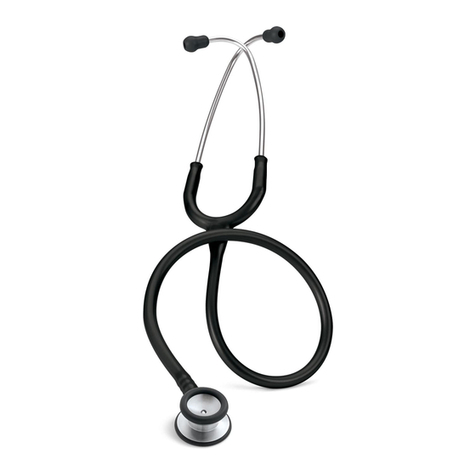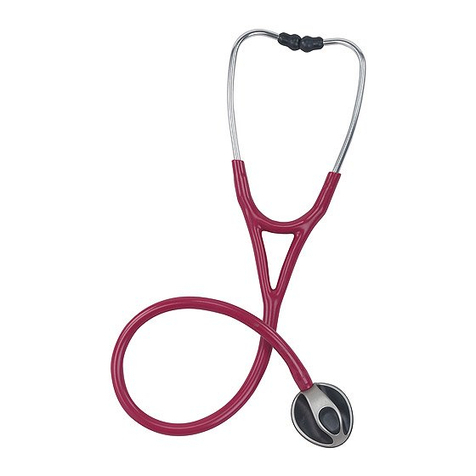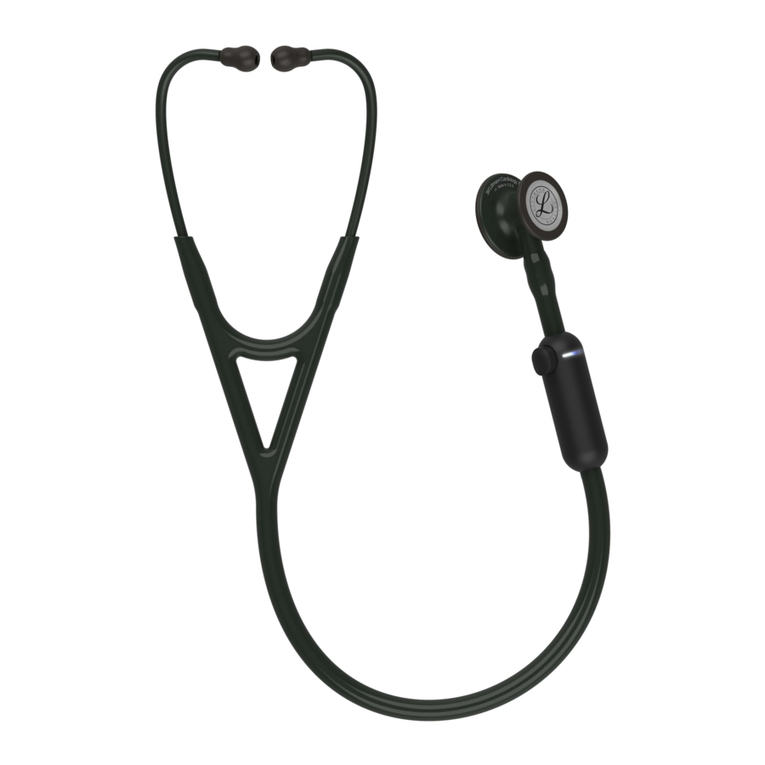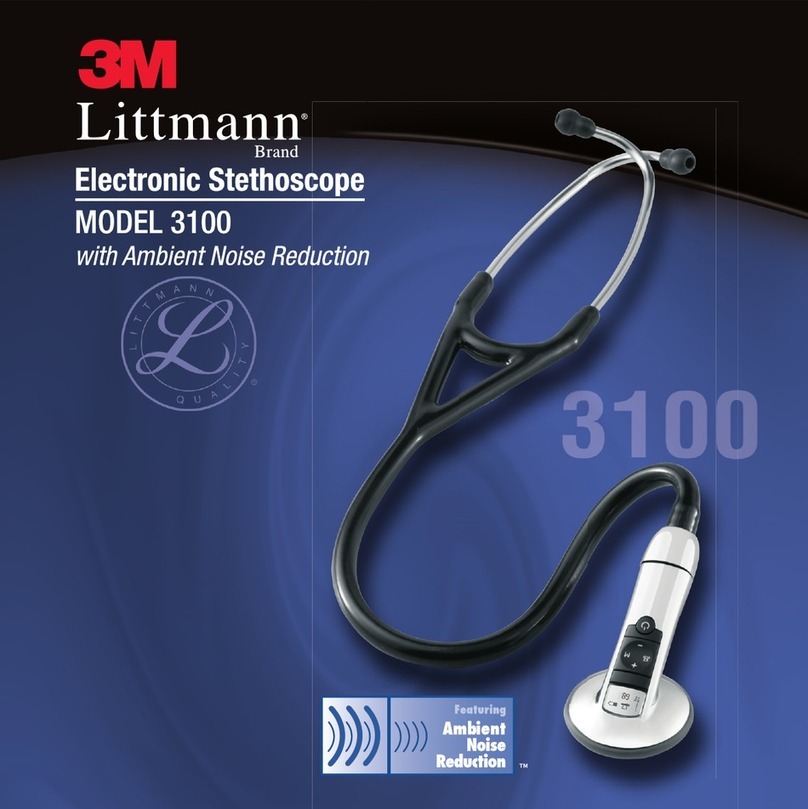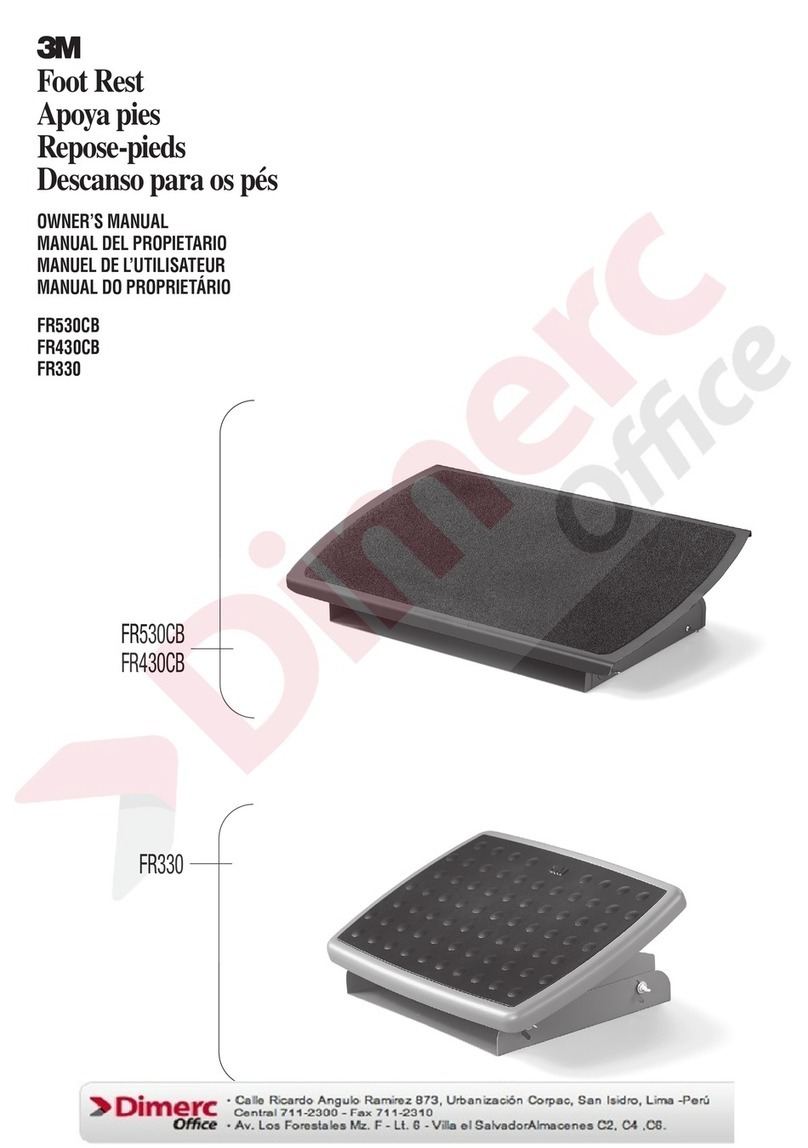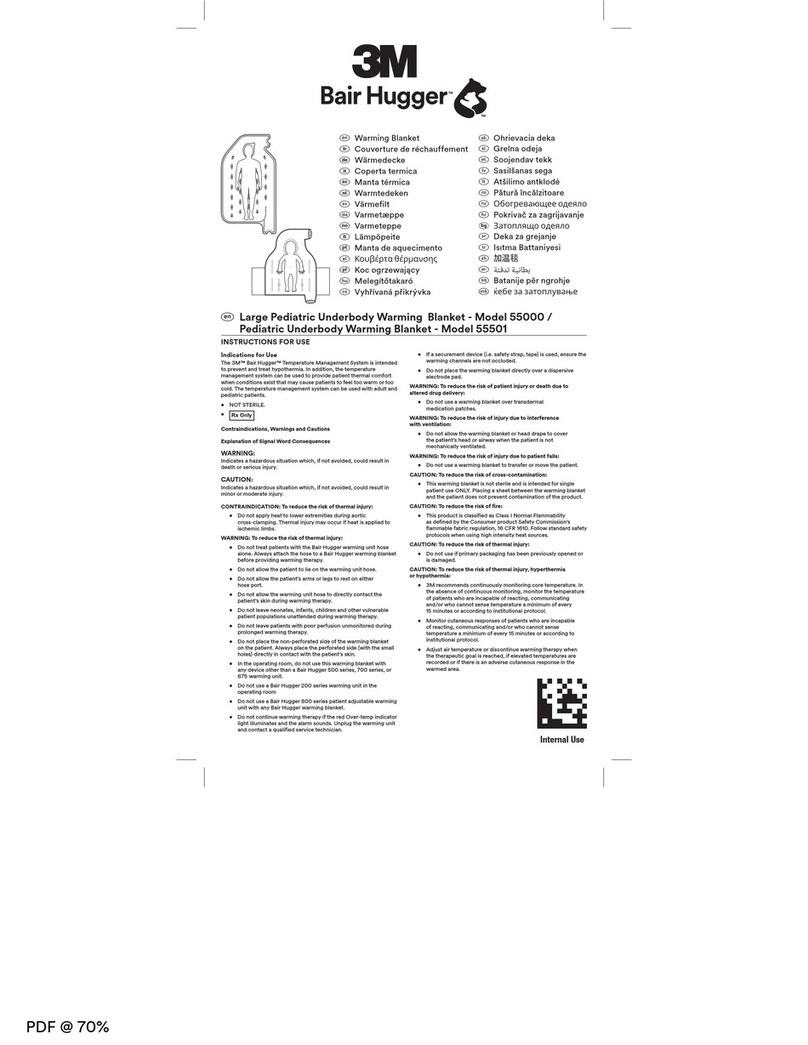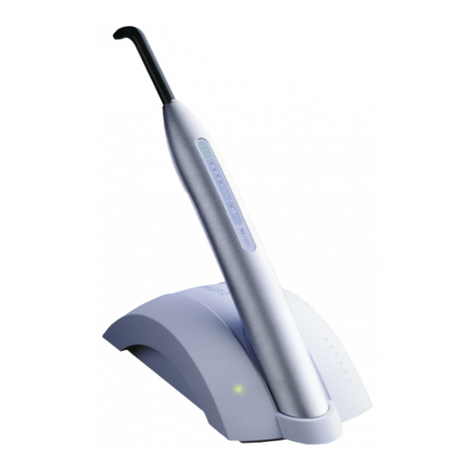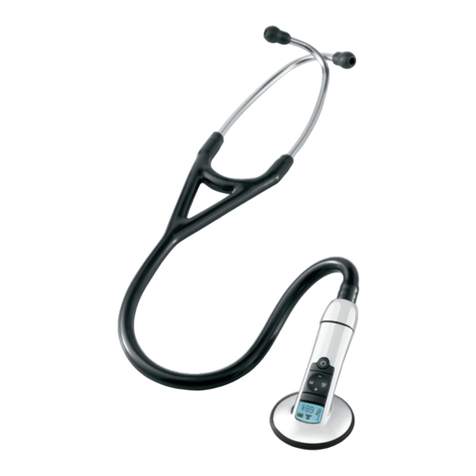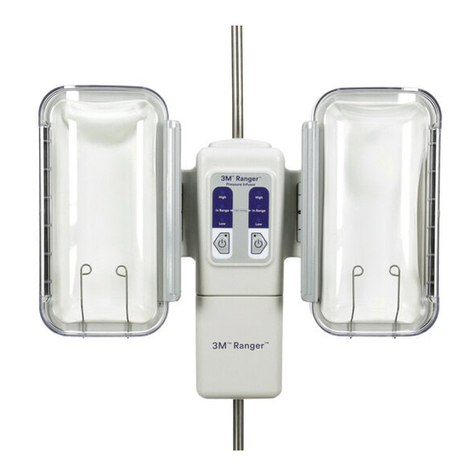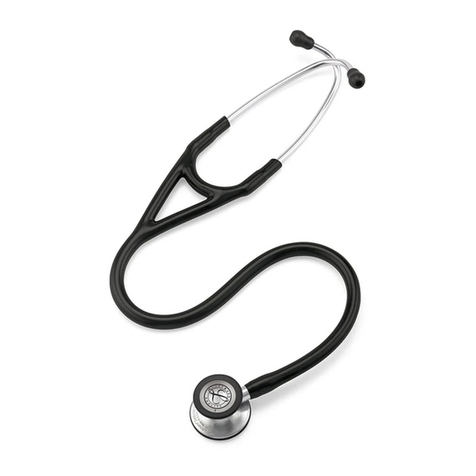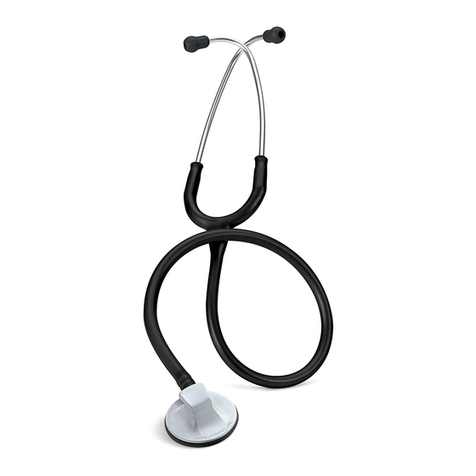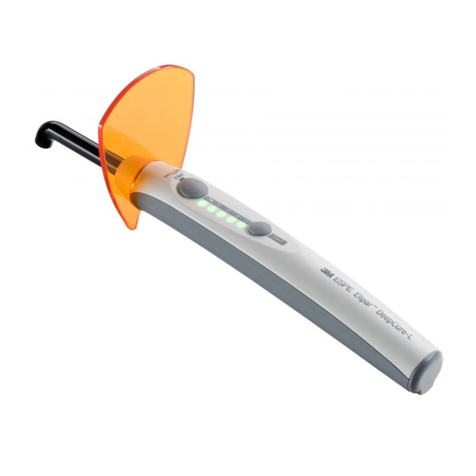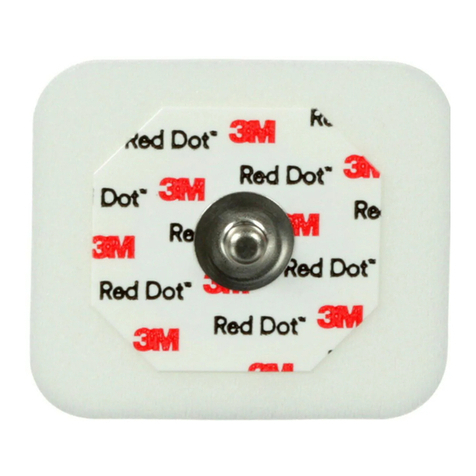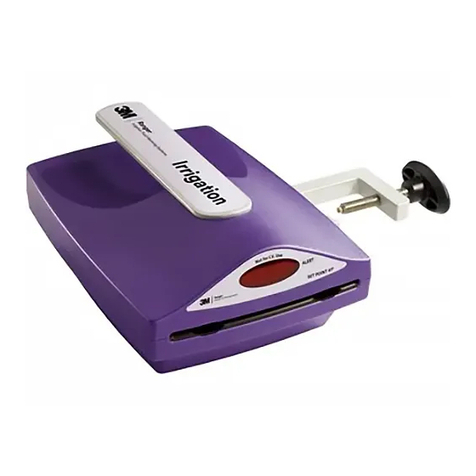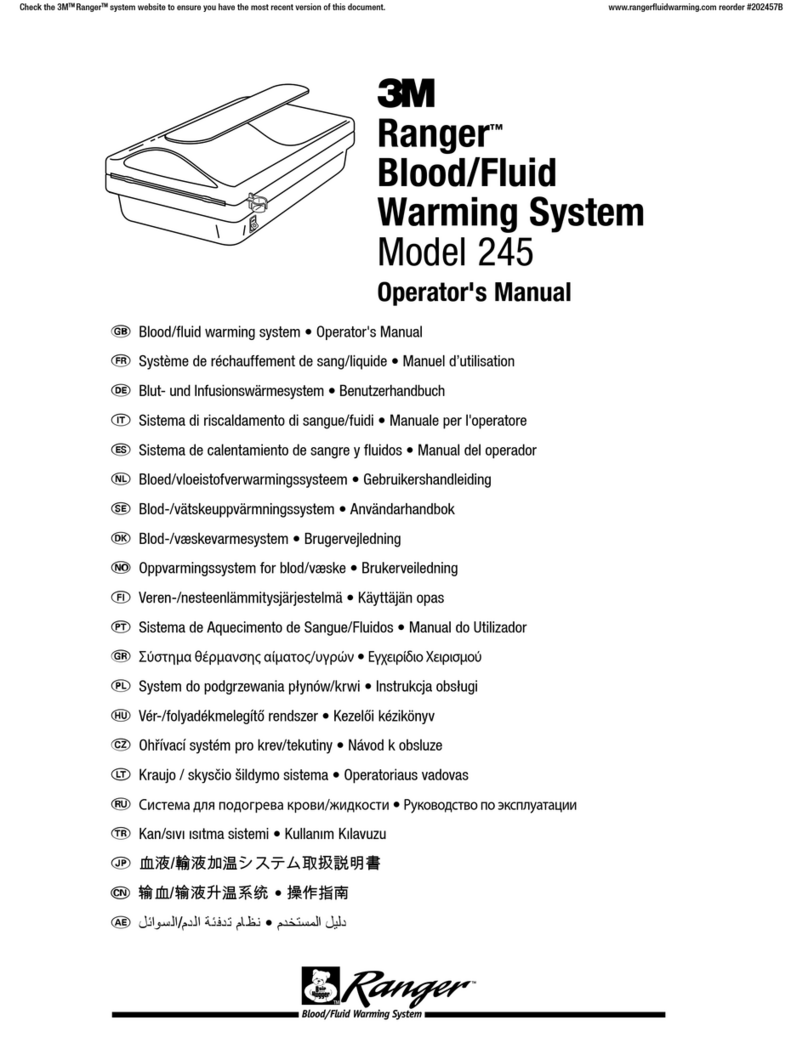
General Use and Maintenance
• Avoid extreme heat, cold, solvents, and oils.
• The entire stethoscope can be wiped clean with
alcohol or soapy water.
• Eartips can be removed from the eartubes for
thorough cleaning.
NOTE: Do not immerse your stethoscope in any liquid
or subject it to steam sterilization. If disinfection is
required, the stethoscope may be wiped with a 70%
isopropyl alcohol solution.
Littmann Stethoscope Service and
Warranty Program
Your Littmann stethoscope comes with the finest service
and warranty policy in the industry. The Littmann Classic
II S.E. Stethoscope is warranted against any defects in
material and workmanship for a period of three (3) years.
If a material or manufacturing defect is discovered during
the warranty period, repairs will be made without charge
upon the return of the instrument to 3M, except in cases of
obvious abuse or accidental damage.
For maintenance or repair services, write a short note
explaining the repair or service you require, include
your name, address and phone number and send your
stethoscope directly to:
3M Health Care Service Center
Bldg. 502, Suite 200
3350 Granada Ave. North
Oakdale, MN 55128
1-800-292-6298
IN CANADA:
3M Health Care Service Centre
3M Canada Inc.
80 Enterprise Drive South
London, Ontario
Canada N6N1C2
1-800-563-2921
Outside of the U.S. and Canada please contact your local
3M subsidiary for maintenance and repair information.
Explanation of Symbols:
4
pushed on to the end of the eartube and snapped firmly
into place. To remove, pull firmly on the eartip.
Removing the Diaphragm and
Cleaning the Chestpiece
With the diaphragm side up,
grasp the rim with the thumbs
and index fingers of both
hands and roll the rim off the
edge of the chestpiece.
Remove the diaphragm from
the rim and clean the parts in
soapy water or wipe with alcohol. Chestpiece surfaces
can be wiped with alcohol or soapy water. Dry all parts
and surfaces thoroughly before reassembly.
Assembly and Replacement of the
Tunable Diaphragm
Using your fingertip, apply a
small amount of talcum powder
to the inside surface of the
flexible edge of the diaphragm.
This will facilitate assembly
and maintain smooth and quiet
low/high frequency alternation.
Snap the diaphragm with your fingers to remove excess
talc.
Insert the flexible edge of the
diaphragm into the groove of
the rim. This is best
accomplished by starting with
the rim positioned above the
legible side of the diaphragm.
Visually examine the ring to
ensure that the flexible edge is
smoothly engaged inside the
rim. If necessary, flex the
assembly by pinching the outer
rim edge between the thumb
and fingers. Repeat this flexing procedure after rotating
the assembly one quarter.
To attach the rim/diaphragm
assembly to the chestpiece,
engage the groove of the rim
(with the diaphragm attached)
around the chestpiece at one
point and hold it in place with
your thumbs.
Slowly roll the rim around and
over the chestpiece edge using
both thumbs, moving in
opposite directions around the
chestpiece.
Visually inspect the edge where
the diaphragm engages the rim
for uniform containment.
Minor adjustments may be
made by slightly pulling and
rolling the rim away from the
diaphragm, allowing the
diaphragm to slip into position.
3
L
I
T
T
M
A
N
N
Q
U
A
L
I
T
Y
TM
N
N
A
M
T
T
I
L
Q
U
A
L
I
T
Y
TM
N
N
A
M
T
T
I
L
Q
U
A
L
I
T
Y
TM
N
N
A
M
T
T
I
L
Q
U
A
L
I
T
Y
N
N
A
M
T
T
I
L
Q
U
A
L
I
T
Y
TM
N
N
A
M
T
T
I
L
Q
U
A
L
I
T
Y
TM
I
L
Q
U
A
N
N
A
M
T
T
L
I
T
Y
• Attention, see instructions for use.
• This product and package do not contain
natural rubber latex.
ins 38-9017-6963-8 9/20/05 12:13 PM Page 5
